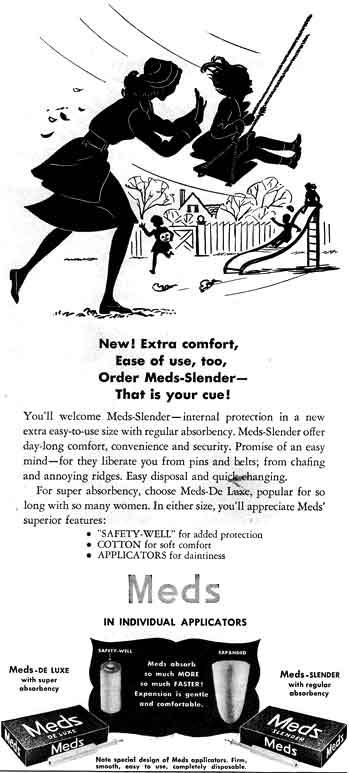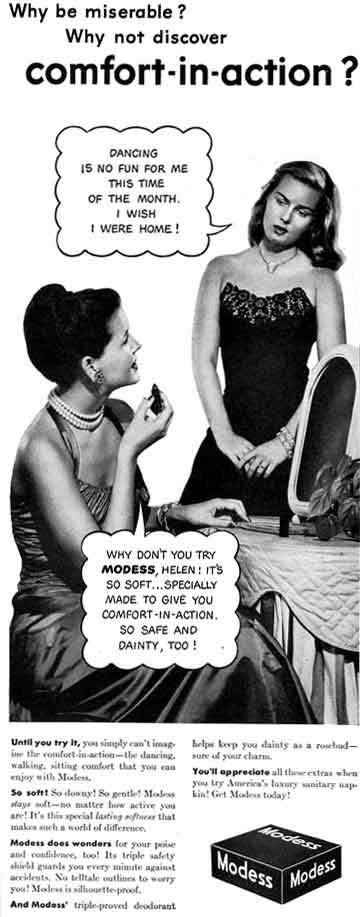See a later Meds tampon, an earlier ad and
some undated instructions.
See a Modess True or False? ad in The American
Girl magazine, January 1947, and actress Carol Lynley
in "How Shall I Tell My Daughter" booklet ad (1955) - Modess . . . . because ads (many dates).
 
|
 
Ads for Modess sanitary napkins and Meds tampons, U.S.A., 1946
Emphasizing freedom of movement
Personal Products Company, of Johnson & Johnson, made both items
and one complements the other. Both ads emphasize freedom of movement although
the tampon won hands down if you ask me (which you didn't). Just the year
before the Dickinson report examined the advantages
tampons had over menstrual pads. Women hated that they shifted around, partly
a fault of the menstrual belts of the era -
or of any era.
The Modess ad emphasized softness (small print at bottom). Look how
coarse the gauze covering the pad used to be,
which was what many women complained about (see the Gilbreth
report, 1927).
Both products died, Meds because it was too big, Modess probably because
of the demise of sanitary napkin belts to hold the thick pads.
Looking at the fine white lines in the black areas, it's probable the
artist used scratchboard for the top ad, a common and beautiful way
to make technical drawings and ads in the early-to-middle 20th century.
The secret was cardboard covered with a layer of chalk. First the artist
drew a picture on the white chalk. Then (s)he filled in the drawing with
India ink. Then, usually using specially made scrapers - (s)he could use
a pin or Exacto knife - (s)he scraped away the areas to be white, like fine
lines. The results could be striking. I believe you can still today buy
scratchboard and scrapers. I made some illustrations in scratchboard for
the magazine where I was the art director a zillion years ago.
Norah B. kindly sent the scans.
|
 |
 |
See a Modess True or False? ad in The American
Girl magazine, January 1947, and actress
Carol Lynley in "How Shall I Tell My Daughter"
booklet ad (1955) - Modess . . . . because ads
(many dates).
|